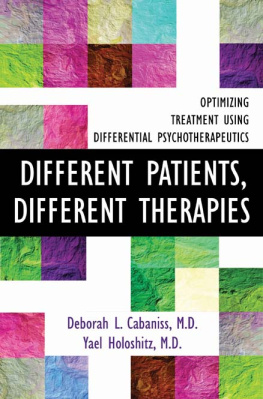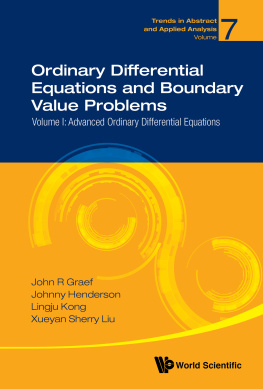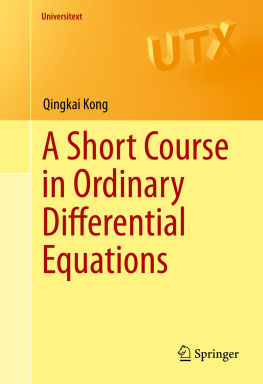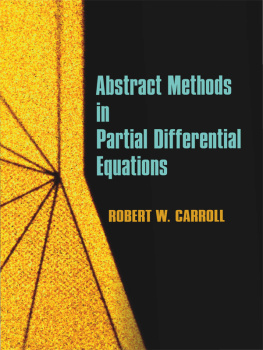Contents

A PLURALIST THEORY OF AGE DISCRIMINATION
This book provides a comprehensive theory of age discrimination that can guide the direct and indirect age discrimination provisions of the Equality Act 2010. The Act holds that unequal treatment on the grounds of age, and measures that are on their face age-neutral but have the effect of disadvantaging particular age groups, are lawful only if the treatment can be shown either to be a proportionate means of achieving a legitimate aim or if the treatment fits into a specifically prescribed exception. In this way, the proportionality test distinguishes justified and unjustified age-differential treatment with only the former legally permissible.
This book outlines and defends a pluralist theory of age discrimination that assists in making the distinction between justified and unjustified age-differential treatment. The theory identifies the principles that explain when and why age-differential treatment wrongs people and the principles that can justify this treatment. It is a pluralist theory because it recognises that age-differential treatment can wrong people for a number of different, overlapping reasons, and these different reasons should inform how we apply age discrimination law. The pluralist approach to age discrimination theory can improve legal reasoning in age discrimination cases by articulating the relevant principles and competing interests that are at stake in age discrimination claims.
In constructing the theory, the book adopts the reflective equilibrium method. This requires that we examine our initial moral beliefs about age discrimination by seeking coherence with beliefs we have about similar moral and philosophical issues and revising the initial beliefs as a result of challenges to them. In applying this method, the book identifies the following five principles to form a pluralist theory of age discrimination: equality of opportunity, social equality, respect, autonomy and efficiency.
A Pluralist Theory of Age
Discrimination
Stuart Goosey

HART PUBLISHING
Bloomsbury Publishing Plc
Kemp House, Chawley Park, Cumnor Hill, Oxford, OX2 9PH, UK
1385 Broadway, New York, NY 10018, USA
HART PUBLISHING, the Hart/Stag logo, BLOOMSBURY and the Diana logo are
trademarks of Bloomsbury Publishing Plc
First published in Great Britain 2020
Copyright Stuart Goosey, 2020
Stuart Goosey has asserted his right under the Copyright, Designs and
Patents Act 1988 to be identified as Author of this work.
All rights reserved. No part of this publication may be reproduced or transmitted in any form or by any
means, electronic or mechanical, including photocopying, recording, or any information storage
or retrieval system, without prior permission in writing from the publishers.
While every care has been taken to ensure the accuracy of this work, no responsibility for
loss or damage occasioned to any person acting or refraining from action as a result of any
statement in it can be accepted by the authors, editors or publishers.
All UK Government legislation and other public sector information used in the work is
Crown Copyright . All House of Lords and House of Commons information used in
the work is Parliamentary Copyright . This information is reused under the terms
of the Open Government Licence v3.0 (http://www.nationalarchives.gov.uk/doc/
open-government-licence/version/3) except where otherwise stated.
All Eur-lex material used in the work is European Union,
http://eur-lex.europa.eu/, 19982020.
A catalogue record for this book is available from the British Library.
Library of Congress Cataloging-in-Publication data
Names: Goosey, Stuart, author.
Title: A pluralist theory of age discrimination / Stuart Goosey.
Description: Oxford, UK ; New York, NY : Hart Publishing, an imprint of
Bloomsbury Publishing, 2020. | Includes bibliographical references and index.
Identifiers: LCCN 2020038507 (print) | LCCN 2020038508 (ebook) |
ISBN 9781509933761 (hardback) | ISBN 9781509944071 (paperback) |
ISBN 9781509933778 (Epub) | ISBN 9781509933785 (pdf)
Subjects: LCSH: Age discriminationLaw and legislation. | Equality before the law. | Ageism.
Classification: LCC K3242 .G66 2020 (print) | LCC K3242 (ebook) | DDC 342.08/77dc23
LC record available at https://lccn.loc.gov/2020038507
LC ebook record available at https://lccn.loc.gov/2020038508
ISBN:HB:978-1-50993-376-1
ePDF:978-1-50993-378-5
ePub:978-1-50993-377-8
Typeset by Compuscript Ltd, Shannon
To find out more about our authors and books visit www.hartpublishing.co.uk.
Here you will find extracts, author information, details of forthcoming events
and the option to sign up for our newsletters.
This book develops and revises my PhD manuscript. I would like to thank Lizzie Barmes, Kate Malleson and Richard Ashcroft for their advice, guidance and support in supervising my PhD project. I would also like to thank my PhD examiners, Jo Wolff and Colm OCinneide, for their detailed and thoughtful comments on the manuscript. This book responds to their comments, and, consequently, this books argument is more thorough and robust than the original PhD manuscript.
I developed the idea for a research project on age discrimination law after attending Sandra Fredman and Tarunabh Khaitans seminars on comparative equality law at the University of Oxford, which included discussions on why people tend to have different moral intuitions about the wrongness of age discrimination vis--vis race discrimination and sex discrimination.
I also offer special thanks to Aaron Baker, who, after meeting me for the first time at Durham Law School, read my PhD manuscript and encouraged me to submit a book proposal on the topic to Hart Publishing. Thanks to the Durham Law School students who participated in my seminars on age discrimination law, where many of the ideas in this book were discussed and debated.
My good friend, Samuel Brewer, and my partner, Danyu Tong, have offered a great deal of support to me, including offering encouragement and engaging in discussions on this books themes.
Finally, thanks to London North Eastern Railway. I had written much of this book in the quiet carriages of their trains and I used their free Wi-Fi to conduct research for this book.
Canada
| Law v Canada (Minister of Employment and Immigration) [1999] 1 SCR 497 |
| R v Kapp [2008] 2 SCR 483, 2008 SCC 41 |
European Union
| Age UK v Secretary of State for Business, Enterprise and Regulatory Reform (known as the Heyday case) C-388/07 [2009] ECR I-1569 |
| Bilka-Kaufhaus GmbH v Weber von Hartz C-170/84 [1987] ICR 110 |
| Commission v Hungary C-286/12 [2013] 1 CMLR 44 |
| Fuchs and Khler C-159/10 and C-160/10 [2011] ECR I-06919 |
| Georgiev v Tehnicheski universitet Sofia, filial Plovdiv C-250/09 [2011] 2 CMLR 7 |
| Htter v Technische Universitt Graz C-88/08 [2006] ECR I-05325 |
| Ingenirforeningen i Danmark C-515/13 [2011] 1 CMLR 35 |
| The Incorporated Trustees of the National Council on Ageing (Age Concern England) v Secretary of State for Business, Enterprise and Regulatory Reform C-388/07 [2009] ECR I-1569 |
| Mangold v Helm C-144/04 [2006] ECR I-09981 |
| Palacios de la Villa v Cortefiel Servicios SA C-411/05 [2007] ECR I-8531 |











